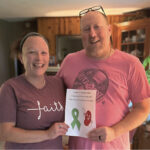 Dressed to kill for that first date, a make or break interview for your dream job, a long overdue night out, and the last thing you want is a dingy, yellow smile. Years of coffee, tea and food stains vanish in seconds as you rinse free the black, sticky mess from your teeth revealing underneath a dazzling, bright, shiny set of pearly whites.
Dressed to kill for that first date, a make or break interview for your dream job, a long overdue night out, and the last thing you want is a dingy, yellow smile. Years of coffee, tea and food stains vanish in seconds as you rinse free the black, sticky mess from your teeth revealing underneath a dazzling, bright, shiny set of pearly whites.
This is the illusion that charcoal toothpaste companies try to sell you, which isn’t much different than the whitening toothpaste propaganda you see on a daily basis. A whiter and brighter smile is the most coveted outcome of dental treatment, and it’s no surprise that whitening toothpaste is the No.1-selling and sought-after type of toothpaste when it comes to the American consumer.
Whitening pastes can be a powerful and cost-effective ally in restoring that dull smile, but like most things that seem too good to be true, caution is advised.
Most whitening pastes act as abrasives, which remove stains from the outer layer of your tooth called enamel. It may take months before you achieve a noticeable result. Enamel is exceptionally hard, but it is still susceptible to wear from over-brushing and, once removed, it will never grow back.
The American Dental Association has developed a scale known as “Relative Dentin Abrasivity” (RDA), which we use to score toothpastes and determine if they are helpful or harmful. Surprisingly, there are quite a few toothpastes that are harmful, dangerous or damaging for your teeth, and most of those are promoted as whitening pastes. If you are going to be using a whitening paste, do some research before buying and compare the following information to make a healthy choice for your teeth.
- 0-70: Low abrasive and safe
- 70-100: Medium abrasive—safe for enamel but dangerous if you have gum recession
- 100-150: High abrasive—can be dangerous for your teeth
- 150-250: Very high abrasive—harmful limit, damaging for teeth
- 250 and above: Not recommended
Since not all pastes are created equal, here are some tips on what to look for and what to avoid when perusing your store’s dental aisle.
Pastes promoted as sensitive tend to have some of the lowest RDA values available and tend to whiten using a detergent action. This detergent action helps to gently lift stains from your teeth just like your laundry detergent does for your clothes. Sensodyne True White works through detergent action and scores an RDA less than 15 compared to Crest 3D White Vivid, which scores a whopping 205 RDA.
Charcoal toothpastes are becoming more popular as many seek to move towards simpler and less engineered options. Many charcoal toothpastes have been formulated to provide a safe RDA. However, self-mixed charcoal powders may not have the same consistency. These can be dangerous as their RDA values vary and may be damaging for your teeth, especially if you have gum recession.
Whatever choice you make, be sure to update your dentist and hygienist so they can help you avoid any issues with your specific situation.
Keep Smiling,
Dr. Sleuth
Our Tooth Sleuth, Dr. Josh Capozzi, does most of his sleuthing at Capozzi Dental in Etters.
Visit Dr. C’s Facebook and comment with questions for Dr. C to answer in his next article. www.facebook.com/capozzidental.





